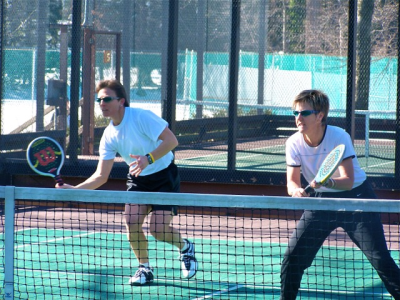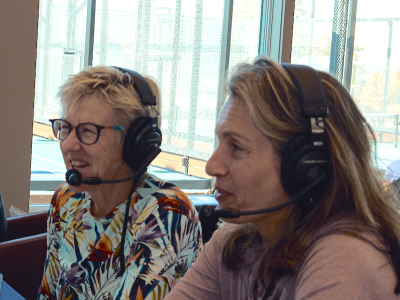NEWS
Gerri-isms On Partnership and Positioning

If there has ever been someone qualified to speak about partnership and positioning, it is Hall-of-Famer Gerri Viant, a 13-time APTA National champion, nine of those won with partner Sue Aery. Christi Hays contributed five Gerri-isms articles to Platform Tennis Magazine. Here is an abridged version of one of our favorites.
It’s Not What You Can Reach, It’s What is Yours
Stabbing at bullet speed drives and lunging in front of your partner may give you contact with the ball, but it also leaves you with less chance of control or placement. To help determine which volleys are yours, frame out your third of the court. When your team is at net and the ball is being driven at you from the ad side of the court, one player should straddle the center line square to the angle of the ball, and the other should set up to the right of him. Your team will be covering the 2/3 of the court that are the highest percentage areas for your opponents to hit into.
Own the Middle of the Court
The middle of the court is the area where your opponents have the greatest amount of court to hit into and the net is at its lowest height, making it the highest percentage area for your opponents. Shut it down.

Don’t Make a Guest Appearance
It is all part of the growth cycle of a team, building knowledge and trust. “The flinch” from a guest appearance at the net is like faulting; it is an unforced error. If you stay in your third of the court and trust your partner to do the same, you will lose the temptation to make a guest appearance. That being said, a successful drive-by volley is an effective play if timed and executed well and doesn’t take your partner by surprise. Talk about it first.
The Duck and Weave is Not a Pretty Look
Who should cover a deep lob over your partner’s head? There are many variations on this theme. As a player, I always preferred to cover my own overheads that were going straight over my head especially coming out of the ad side. I’d step back off the net when I recognized that our opponent hit a deep ball. I called “mine” early so I owned it. I was prepared to take the ball in the air or run it down and let it bounce if that was the better choice. Once one partner goes behind the other, you start to hesitate as a team. You don’t want to back up and turn and risk getting hit or running into your partner, so ducking and weaving to the other side leads to chasing your opponent’s shots. You are reacting to your opponent instead of dictating play.


